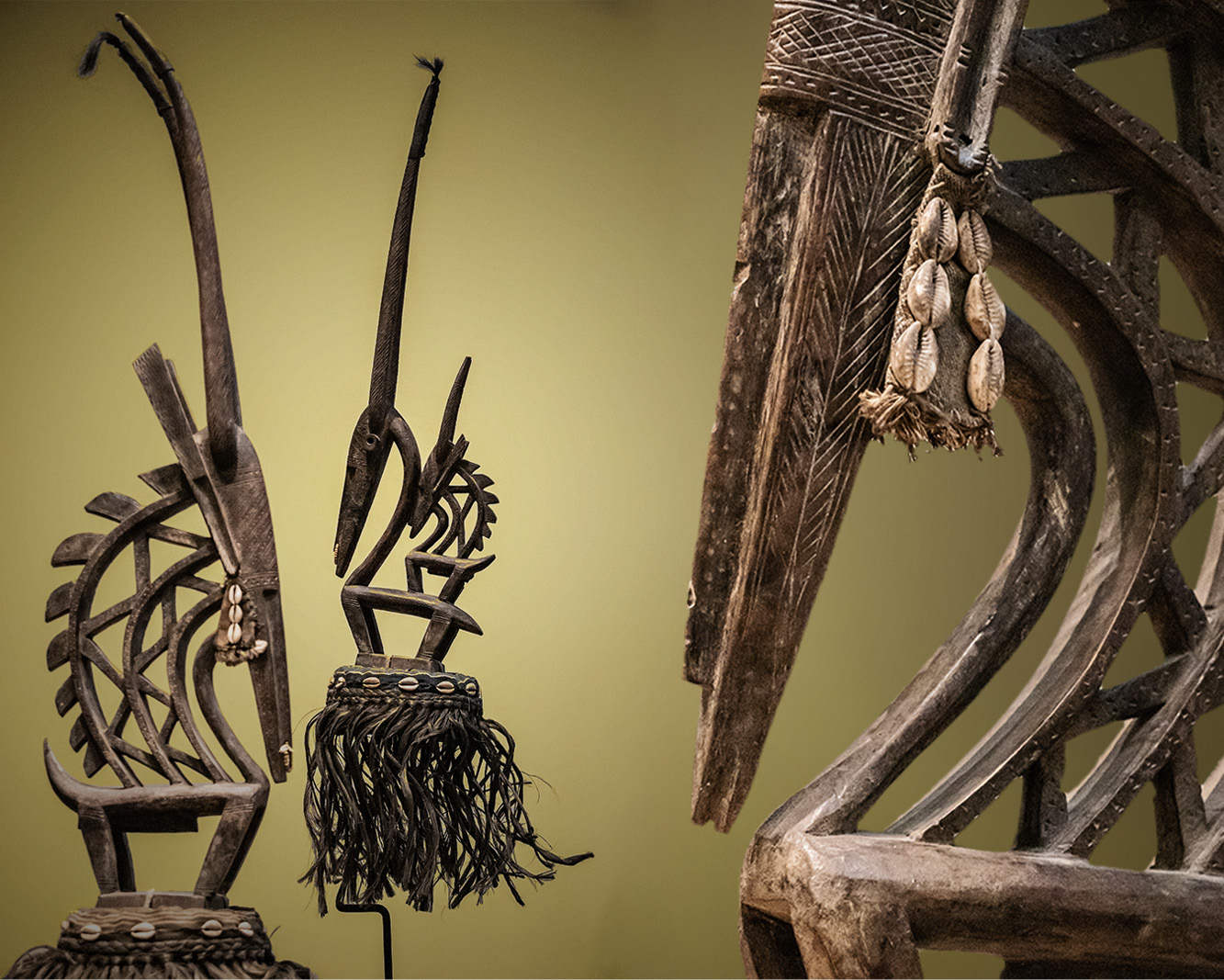Chiwara Masks

Art historians consider the Chi wara (also Ci Wara, or Tyi Wara) to be the iconic sculpture, that came from the West African region, known as Mali, that included the Bamana or Ségou Empire. The first documents were printed in 1912 in France and were called 'Tyi Ouara'. The Bamana (or Bambara) people adapted many artistic traditions, such as pottery, sculpture, weaving, iron figures, and masks, that took a special place in the Bamana society.
The Chiwara shape, often described as an antelope, sometimes can portray aardvark and pangolin, or combine their features in one image. Why such a selection? When we look at these animals' behaviours: antelopes cut the ground with their hooves, while aardvark and pangolin use their claws. This is a key to understanding the Chiwara mask's symbolism: an animal, who digs the ground represents agricultural skill. Bamana people believe in mythos about the creation of farming: a hero, half-mortal, half-animal, brought the knowledge of human cultivation.
How did they use Chiwara masks?
A headdress is made specifically to be worn for Chiwara dance – a celebration of union with nature.
The composition of Chiwara sculpture depends on the gender of the person, who wears it. Sculptures for males have vertical horns and half-human faces. The zig-zag patterns mimic the movement of the sun across the sky.
The female figure considered a tribute to motherhood or womanhood depicts an adult antelope with a fawn on her back. Masks are often adorned with cowrie shells, colorful beads, ribbons, and wigs. In addition to the wooden figurines attached to the basket on the dancer’s head, the costume also includes a pile of dyed raffia and a long staff.
It is important, that Chiwara is always a male and female dancing, that expresses union and prosperity. These traditions survive in part, but nowadays, the ritual has become more of an entertainment.
Bamana woodcarvers formed a distinct 'signature' look of Chi Wara art pieces, that illustrates their heritage and craftsmanship. African sculptural forms became popular among European artists and collectors in the early twentieth century, especially in their more abstract forms. They easily integrate into a modern, eclectic interior.
Explore our collection of African Art: COC Primitivism & African Art Collection














